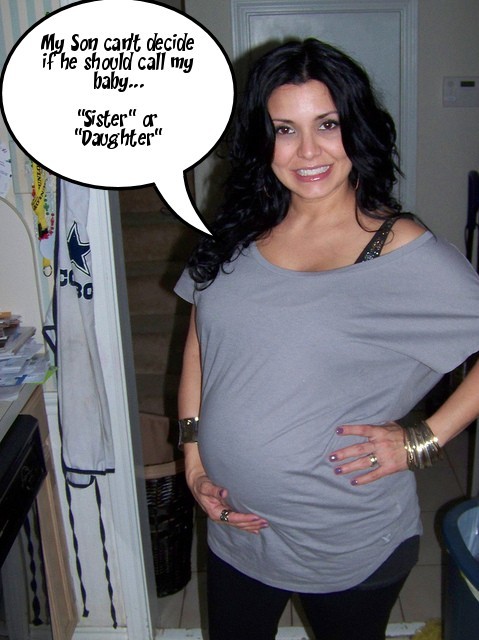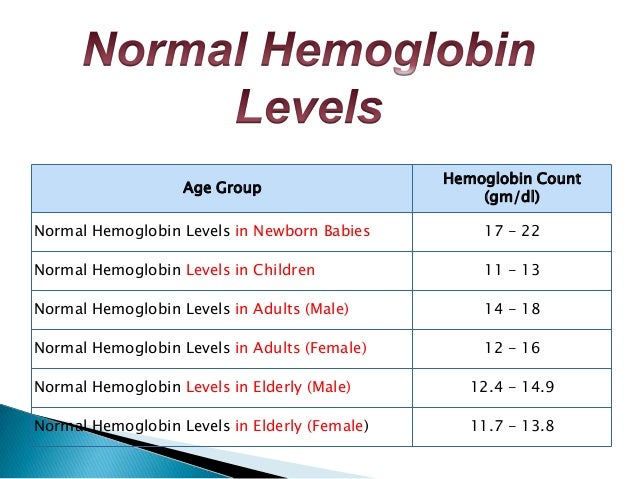How to make your child bilingual
How to Raise a Bilingual Child: Seven Strategies for Success
Adesope, O. O., Lavin, T., Thompson, T., & Ungerleider, C. (2010). A Systematic Review and Meta-Analysis of the Cognitive Correlates of Bilingualism. Review of Educational Research, 80(2), 207-245. doi:10.3102/0034654310368803
Christofides, L. N., & Swidinsky, R. (2010). The economic returns to the knowledge and use of a second official language: English in Quebec and French in the Rest-of-Canada. Canadian Public Policy, 36(2), 137-158. doi:10.3138/cpp.36.2.137
Dunham, P. J., Dunham, F., & Curwin, A. (1993). Joint-attentional states and lexical acquisition at 18 months. Developmental Psychology, 29(5), 827-831. doi:10.1037/0012-1649.29.5.827
Fan, S. P., Liberman, Z., Keysar, B., & Kinzler, K. D. (2015). The exposure advantage: Early exposure to a multilingual environment promotes effective communication. Psychological Science, 26(7), 1090-1097. doi:10.1177/0956797615574699
Gollan, T. H., Starr, J., & Ferreira, V. S. (2015). More than use it or lose it: The number-of-speakers effect on heritage language proficiency. Psychonomic Bulletin & Review, 22(1), 147-155. doi:10.3758/s13423-014-0649-7
Hoff, E., & Core, C. (2015). What clinicians need to know about bilingual development. Seminars in Speech and Language, 36(2), 89–99. doi:10.1055/s-0035-1549104
Hoff, E., Core, C., Place, S., Rumiche, R., Señor, M., & Parra, M. (2012). Dual language exposure and early bilingual development. Journal of Child Language, 39(1), 1-27. doi:10.1017/S0305000910000759
Hudon, T. M., Fennell, C. T., & Hoftyzer, M. (2013). Quality not quantity of television viewing is associated with bilingual toddlers’ vocabulary scores. Infant Behavior and Development, 36(2), 245-254. doi:10.1016/j.infbeh.2013.01.010
Hurtado, N., Marchman, V. A., & Fernald, A.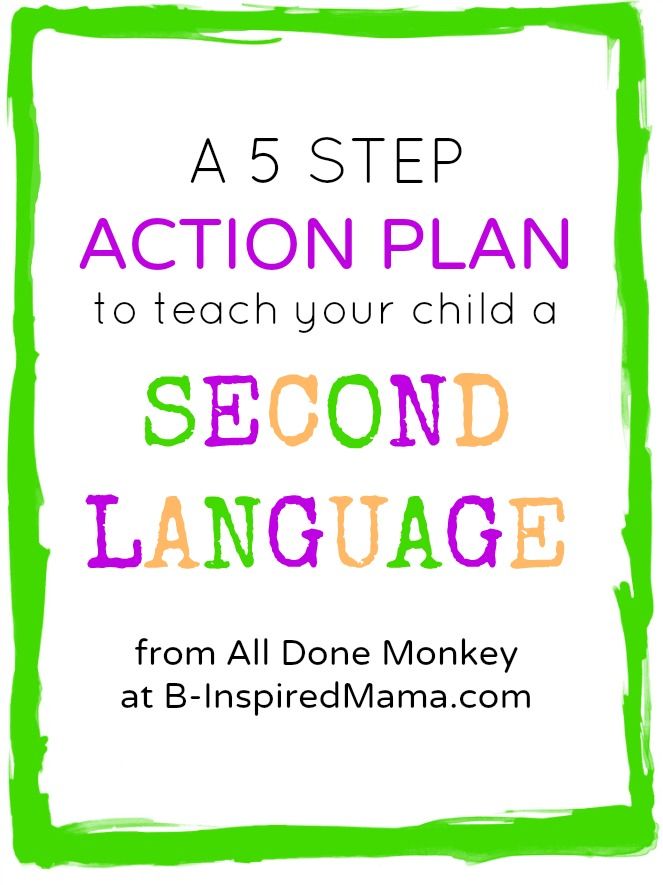 (2008). Does input influence uptake? Links between maternal talk, processing speed and vocabulary size in Spanish‐learning children. Developmental Science, 11(6), F31-F39. doi:10.1111/j.1467-7687.2008.00768.x
(2008). Does input influence uptake? Links between maternal talk, processing speed and vocabulary size in Spanish‐learning children. Developmental Science, 11(6), F31-F39. doi:10.1111/j.1467-7687.2008.00768.x
Huttenlocher, J., Waterfall, H., Vasilyeva, M., Vevea, J., & Hedges, L. V. (2010). Sources of variability in children’s language growth. Cognitive Psychology, 61(4), 343-365. doi:10.1016/j.cogpsych.2010.08.002
Marian, V., Shook, A., & Schroeder, S. R. (2013). Bilingual two-way immersion programs benefit academic achievement. Bilingual Research Journal, 36(2), 167-186. doi:10.1080/15235882.2013.818075
National Institute of Child Health and Human Development Early Child Care Research Network. (2006). Child-care effect sizes for the NICHD Study of Early Child Care and Youth Development. American Psychologist, 61(2), 99–116. doi:10.1037/0003-066X.61.2.99
Patterson, J. L. (2002). Relationships of expressive vocabulary to frequency of reading and television experience among bilingual toddlers.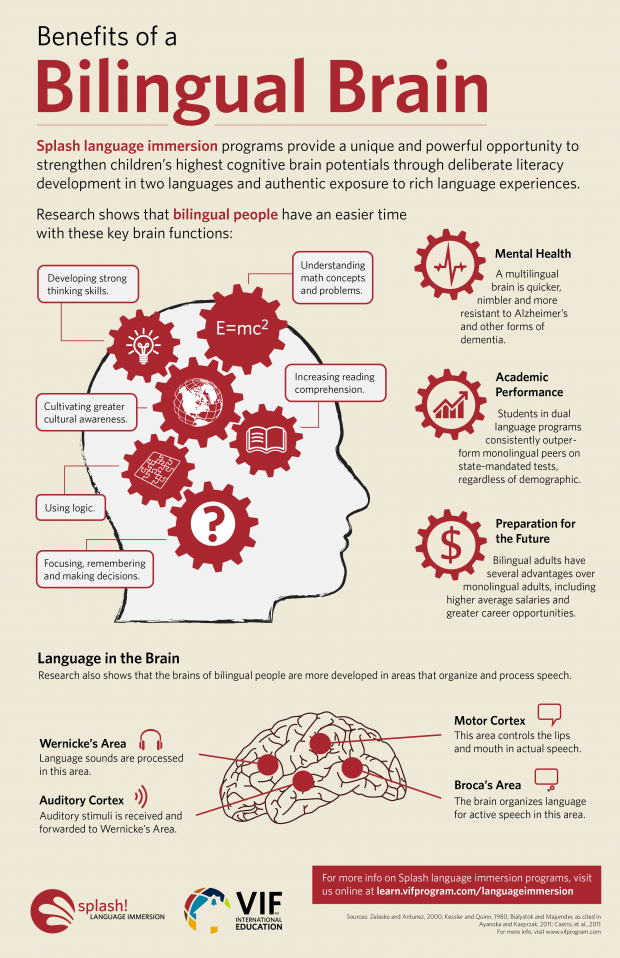 Applied Psycholinguistics, 23(4), 493-508. doi:10.1017/S0142716402004010
Applied Psycholinguistics, 23(4), 493-508. doi:10.1017/S0142716402004010
Pearson, B. Z., Fernandez, S. C., Lewedeg, V., & Oller, D. K. (1997). The relation of input factors to lexical learning by bilingual infants. Applied Psycholinguistics, 18(1), 41-58. doi:10.1017/S0142716400009863
Petitto, L. A., Katerelos, M., Levy, B. G., Gauna, K., Tetrealt, K. & Ferraroi, V. (2001). Bilingual signed and spoken language acquisition from birth: Implications for the mechanisms underlying early bilingual language acquisition. Journal of Child Language, 28(2), 453-496. doi:10.1017/S0305000901004718
Place, S., & Hoff, E. (2011). Properties of dual language exposure that influence 2‐year‐olds’ bilingual proficiency. Child Development, 82(6), 1834-1849. doi:10.1111/j.1467-8624.2011.01660.x
Rivers, W. P., Robinson, J. P., Harwood, P. G., & Brecht, R. D. (2013). Language votes: Attitudes toward foreign language policies. Foreign Language Annals, 46(3), 329-338. doi:10.1111/flan.12048
Foreign Language Annals, 46(3), 329-338. doi:10.1111/flan.12048
Song, L., Tamis-LeMonda, C. S., Yoshikawa, H., Kahana-Kalman, R., & Wu, I. (2012). Language experiences and vocabulary development in Dominican and Mexican infants across the first 2 years. Developmental Psychology, 48(4), 1106-1123. doi:10.1037/a0026401
Tomasello, M., & Farrar, M. J. (1986). Joint attention and early language. Child Development, 57(6), 1454-1463. doi:10.2307/1130423
FAQ: Raising Bilingual Children | Linguistic Society of America
Why want bilingual children?
There are many reasons, but the two most common are:
1) The parents speak different languages (say, an American woman and a Turkish man).
2) The parents speak the same language, but live in a community where most people speak something else (say, a Korean couple living in the USA).
In the first case, both the mother and father may want to be able to use their own language when talking to their children. This is the bilingual home situation. In the second, the parents may want to be able to use their own language at home even though their children also need to function in the world outside the front door. This is the bilingual setting situation. Our own situation is an Italian/English bilingual home in an English-speaking setting, and some of what we say here is based directly on our experience bringing up bilingual children.
This is the bilingual home situation. In the second, the parents may want to be able to use their own language at home even though their children also need to function in the world outside the front door. This is the bilingual setting situation. Our own situation is an Italian/English bilingual home in an English-speaking setting, and some of what we say here is based directly on our experience bringing up bilingual children.
Don't children get confused when they hear two languages spoken around them?
The short answer is no. Children are incredibly sensitive to the different ways people speak. Even when they only hear one language, they learn very quickly about differences between the way men and women talk, the difference between polite and impolite ways of talking, and so on. For children, the bilingual situation is just a matter of another difference between people!
Fifty years ago educators throughout North America used to tell immigrant parents that it was better for their children's schooling if they spoke English at home.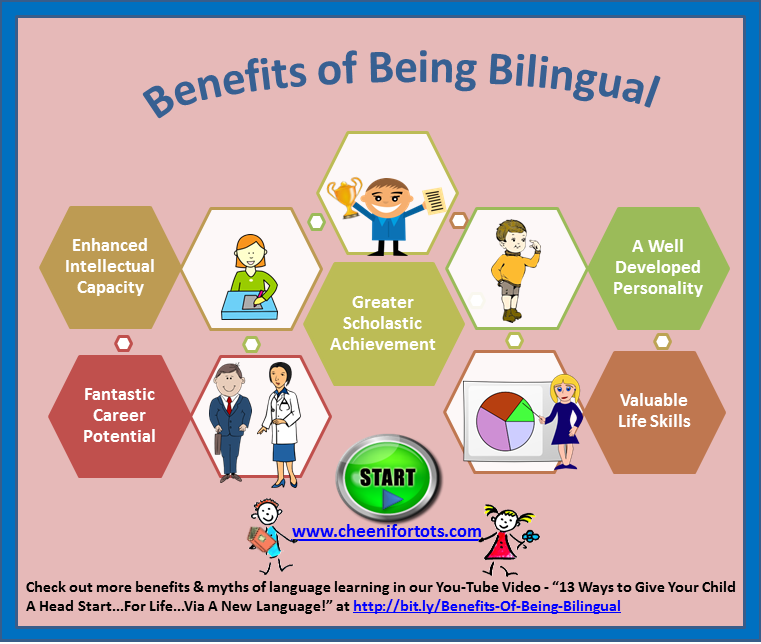 Some researchers thought that early exposure to two languages put children at a disadvantage. Newer research tells us that this is not so, and there may be advantages to being bilingual (in addition to knowing more than one language), such as more flexible thinking. The disadvantages that earlier research found were generally economic disadvantages, linked to the hardships of immigrants' lives.
Some researchers thought that early exposure to two languages put children at a disadvantage. Newer research tells us that this is not so, and there may be advantages to being bilingual (in addition to knowing more than one language), such as more flexible thinking. The disadvantages that earlier research found were generally economic disadvantages, linked to the hardships of immigrants' lives.
Bilingual development sometimes results in slightly slower language development than for some monolingual children. Our older child was still saying things like Where you are? instead of Where are you? in English at four and a half. This is a normal developmental stage for monolingual English children, but they usually figure out that they have to say Where are you? by the time they're three or four. Our older child just took a little longer.
Don't bilingual children ever mix their languages up?
Like adult bilinguals, bilingual children often use words from one language when speaking the other. (This is called code-switching.) But this doesn't mean they are confused about which language they are speaking. In our Italian-English bilingual home, a lot of our food vocabulary is Italian, and we use this even when we're speaking English (and when English words are available). So we'll talk about pollo instead of chicken and sugo instead of sauce. Yet in speaking to monolinguals, bilingual children are careful to use only the relevant language.
(This is called code-switching.) But this doesn't mean they are confused about which language they are speaking. In our Italian-English bilingual home, a lot of our food vocabulary is Italian, and we use this even when we're speaking English (and when English words are available). So we'll talk about pollo instead of chicken and sugo instead of sauce. Yet in speaking to monolinguals, bilingual children are careful to use only the relevant language.
So how do we start teaching our children two languages?
The main thing to keep in mind is that parents don't really "teach" children to speak, any more than they teach them to walk or smile. The most important things in language development are exposure and need. If children are exposed to a language in a variety of circumstances with many different people from the time they are born, and if they feel they need the language to interact with the world around them, they will learn it. If they are exposed to two languages in varied circumstances with different people from the moment they are born, and if they need both languages to communicate with the people around them, they will learn both.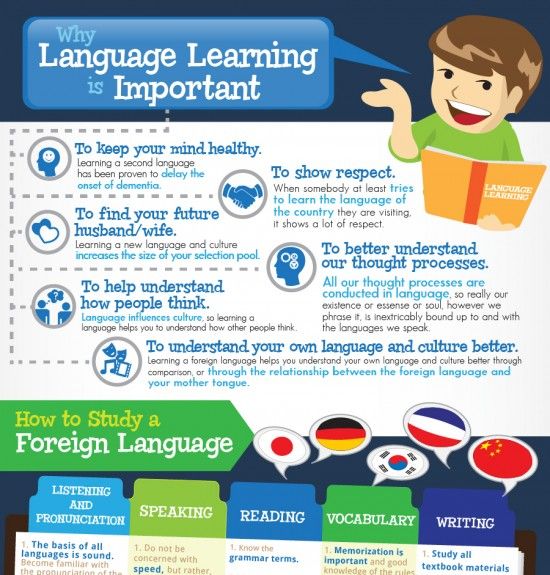
Do you really mean that if our children are exposed to two languages from birth they will learn both, just like that?
No, but children can do this with no difficulty, and it doesn't do them any harm. The hard part is making sure they have enough natural exposure to both languages. Most of the time, one of the two languages you want them to learn will be "more important" somehow, and the trick is to provide enough opportunities for them to use the "less important" one in a way that isn't forced or artificial. The best way, if you can manage it, is to put children in situations where only the "less important" language is used so that there is no temptation to mix languages or revert to the "more important" language.
What do you mean by saying that one language is "more important"?
One language is likely to seem more important to children when that language is needed more frequently than the other. For example, suppose the American woman and Turkish man in the bilingual home speak English with each other.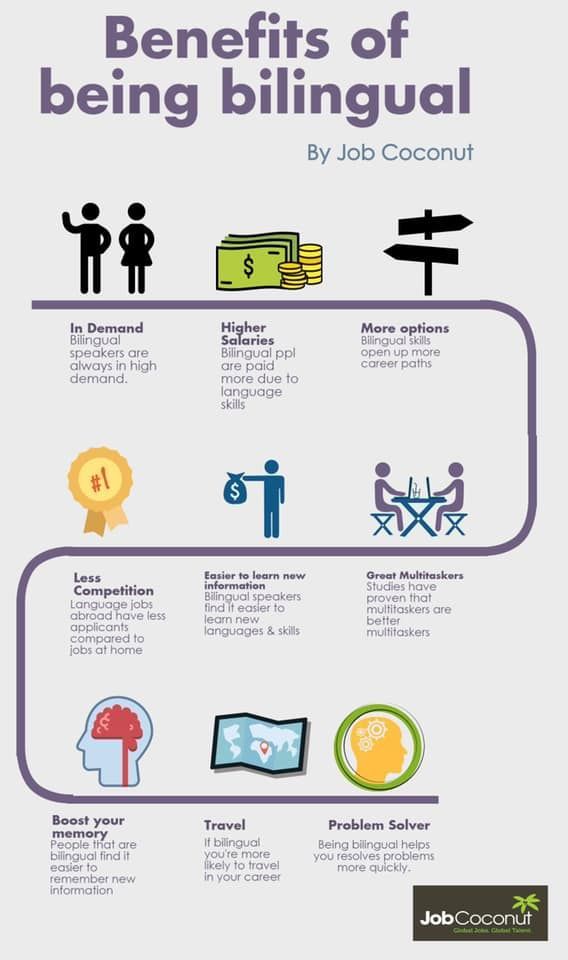 The children will notice that English is used in cases where Turkish isn't and think that English is "more important". But if the same family moves to Turkey, the children will notice that Turkish is used in lots of cases where English isn't, and may decide Turkish is "more important". Some children are very sensitive to these differences and may be reluctant to use the "less important" language—especially if other children don't use it. Others don't seem to mind.
The children will notice that English is used in cases where Turkish isn't and think that English is "more important". But if the same family moves to Turkey, the children will notice that Turkish is used in lots of cases where English isn't, and may decide Turkish is "more important". Some children are very sensitive to these differences and may be reluctant to use the "less important" language—especially if other children don't use it. Others don't seem to mind.
When we talk about one language being "more important" here, we're only talking about the children's point of view! Nonetheless, many adult bilinguals are "dominant" in one of their languages. Even if the differences between their two languages are subtle, most bilinguals feel slightly more at home in one language than the other in certain settings or for talking about certain topics.
Would it be better to start teaching the second language after children have a good start on the first?
No, definitely not, especially in the bilingual home situation where the second language is likely to seem "less important" to the children anyway.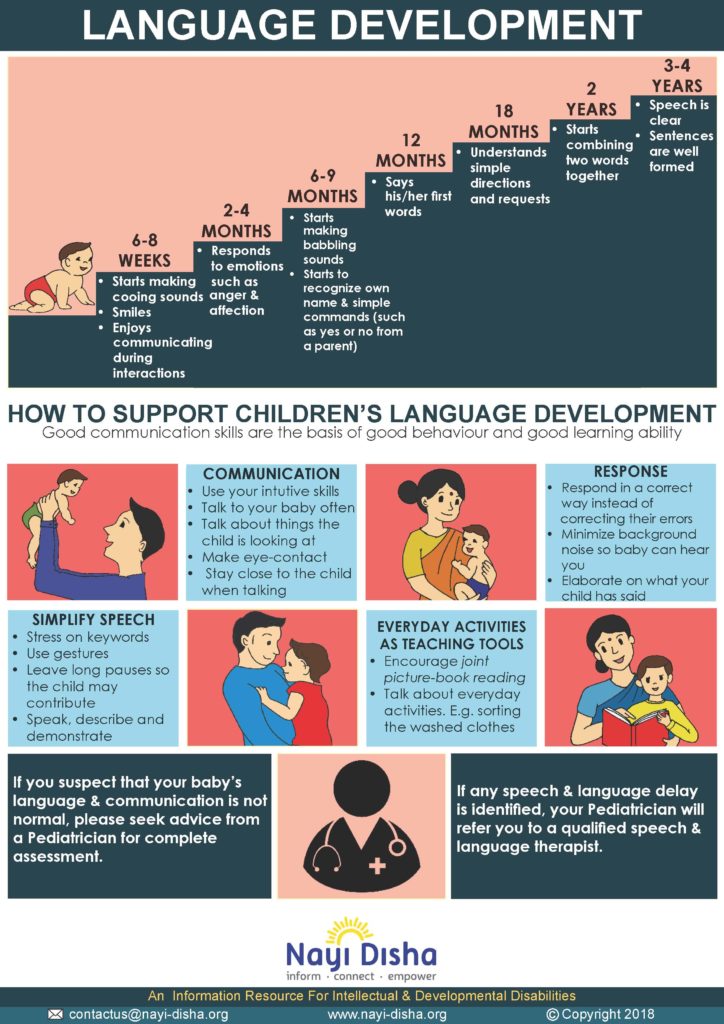 Introducing the second language later is just about guaranteed to make them think it's less important and not worth the effort.
Introducing the second language later is just about guaranteed to make them think it's less important and not worth the effort.
On the other hand, in the bilingual setting situation (say, the Korean couple living in the United States), there isn't any harm in letting children's exposure to English begin naturally and gradually. As long as the family stays in the US and the children go to American schools, there is no risk that they will fail to learn English. Actually, the more common problem with the bilingual setting situation is that the children sometimes reject their home language in favor of the outside language.
My partner and I speak different languages. Should we only speak to our children in our own language if we want them to be bilingual?
Many experts recommend the "one-parent-one-language" method for a bilingual home. The idea is that Mommy (or Mamma, or Mutti) always speaks her own language with the children, and Daddy (or Papa, or Vati) always speaks his own language with them.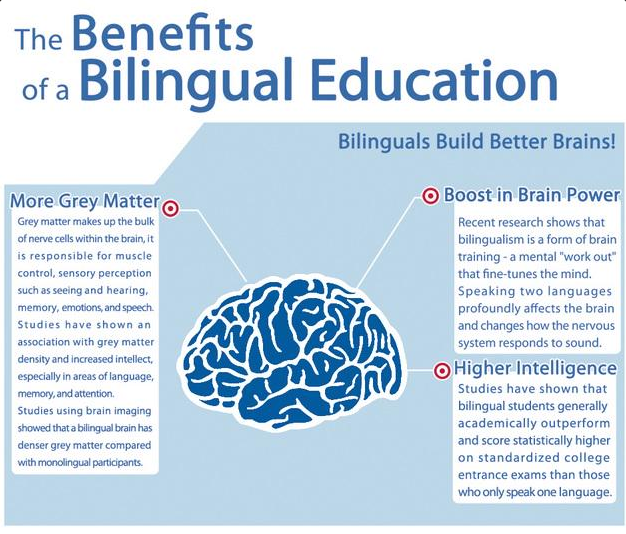 This is a good basis for a successful bilingual home, but it's not the only one, and even one-parent-one-language can go wrong.
This is a good basis for a successful bilingual home, but it's not the only one, and even one-parent-one-language can go wrong.
What are some of the problems with one-parent-one-language?
One problem can be balance. Children need to hear both languages often and in a variety of circumstances. If they never hear the "less important" language except from one parent, they may not get enough exposure for that language to develop naturally. It is especially true that when both parents understand the "more important" language, the children don't feel they need the "less important" one. In these cases it is essential to find other sources of exposure and other ways of creating the sense of need. Monolingual grandparents can be especially helpful! Can you enlist a cousin or grandmother or a paid babysitter who speaks the other language to look after the children? Is there a daycare or playgroup where they can hear the other language? Can you get videos and story tapes in the other language? All of these can make a big difference—especially exposure that involves interaction with other people, not just watching TV.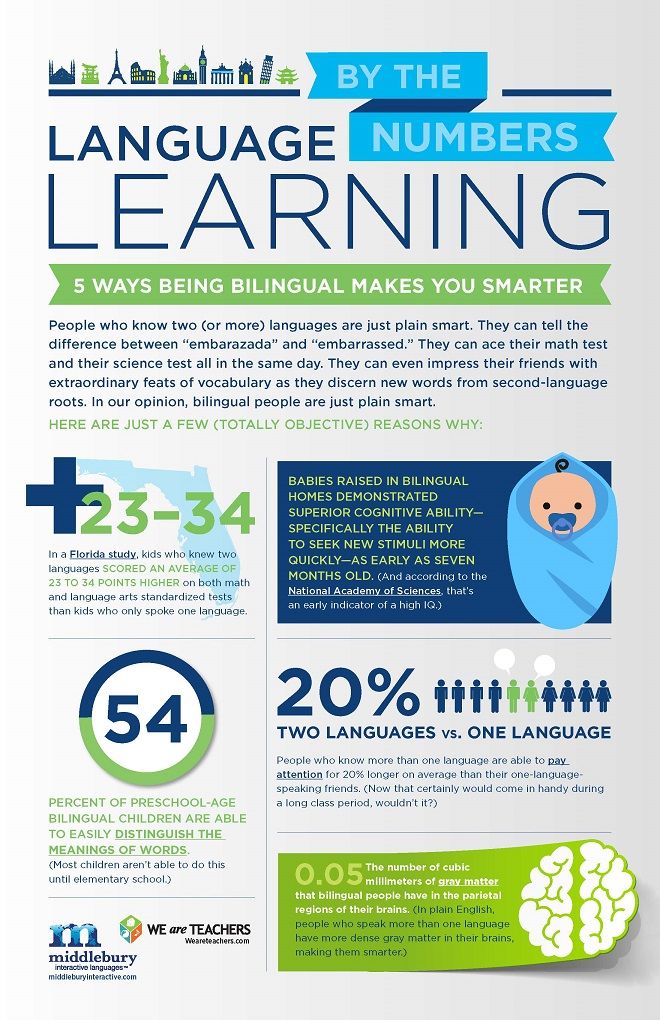 When our children were small, we did things like this to reinforce Italian in a largely English-speaking setting.
When our children were small, we did things like this to reinforce Italian in a largely English-speaking setting.
Another problem is keeping the situation natural. If children feel that they are being forced to do something weird or embarrassing, they will probably resist it. Explicit rules—say, speaking one language on some days and the other on others—can be very hard to enforce and can help create a negative attitude.
Still another problem is exclusion. If one of the parents doesn't speak the other's language (in our example, suppose the American woman doesn't speak Turkish), the children will know that every time they say something in Turkish to their father they are excluding their mother from the conversation. This may make children reluctant to speak one of the parents' languages when both parents are present. In our experience, a bilingual home is more likely to succeed if both parents at least understand both languages—that way, nobody is ever excluded from a family conversation.
What about siblings?
The arrival of a second child can upset the language balance in a bilingual home, and it's common for a second child to be less fully bilingual than the first. Usually the first child speaks to the second in the "more important" language, increasing the exposure the second child gets to that language and decreasing the sense of need for the "less important" one. Think about what you want to do about this in advance. Come up with a strategy that fits your own situation—but it's probably worthwhile to try to enlist the older child or children to promote the "less important" language in your home situation.
My children used to speak our home language just fine, but now that they're going to school, they mix it up with English all the time. What can I do?
Relax. Language mixing is normal where everyone speaks both languages. It doesn't mean that the children will forget one language, and it doesn't mean that they can't tell the difference any more between two languages. If you scold them for speaking English it may create a negative attitude about the home language and actually make things worse. Instead, create natural situations where the children really need the home language — like calling on those monolingual grandparents again!
If you scold them for speaking English it may create a negative attitude about the home language and actually make things worse. Instead, create natural situations where the children really need the home language — like calling on those monolingual grandparents again!
You can understand this kind of language mixing if you keep in mind that simple exposure is an important ingredient of children's language development. When your children were small, they were probably more exposed to your home language — say Korean — than they were to English. Now that they are going to school, they are exposed only to English for hours a day, and they are learning all kinds of new words and new ways of using language — but only in English. They probably don't know the Korean word for "notebook" or "social studies" or "principal". When they use an English word in a Korean sentence, tell them what it's called in Korean rather than worrying that they're losing their home language. Remember, even if they end up with English as their dominant language, they can still be perfectly competent Korean speakers as well.
Additional Reading
Baker, Colin. 1995. A Parents' and Teachers' Guide to Bilingualism. Multilingual Matters.
Grosjean, François. 1982. Life with Two Languages. Harvard University Press.
Harding-Esch, Edith, and Philip Riley. 2003. The Bilingual Family: A Handbook for Parents. 2nd edn. Cambridge University Press.
1 See also: Birner, Betty. 2002. Bilingualism FAQ. Washington, DC: Linguistic Society of America. www.linguisticsociety.org.
2 See also: Birner, Betty. Language Acquisition FAQ. Washington, DC: Linguistic Society of America. www.linguisticsociety.org.
FAQ by Antonella Sorace and Bob Ladd
Download this document as a pdf.
Access the Spanish translation of this document here (En Español).
Interested in more on this topic? Check out Bilingualism, Language in Children, and more books from LSA here!
How to raise a bilingual child
Will your English be enough for everyday communication?
Check for free
Sociologists believe that by 2020, 70% of the inhabitants of developed countries will be bilingual. If, in our childhood, knowing English was a valuable asset, by the time our children graduate from school, it will become a necessary condition - like the ability to write or use a computer. And this skill needs to be developed as early as possible. The later a person begins to learn a language, the lower the chances that he will speak it as a native.
If, in our childhood, knowing English was a valuable asset, by the time our children graduate from school, it will become a necessary condition - like the ability to write or use a computer. And this skill needs to be developed as early as possible. The later a person begins to learn a language, the lower the chances that he will speak it as a native.
English level test
Find out your level, get recommendations for learning and a promo code for English lessons as a gift
Modern parents no longer postpone learning languages for school time and try to lay the foundations in early childhood. Studies show that the best period for learning languages is from birth to 9 years. After this age, children already develop social expectations, they are afraid of making a mistake and learn much more slowly than toddlers.
How to raise a bilingual child? Let's consider what scenarios can be for solving this problem in different situations.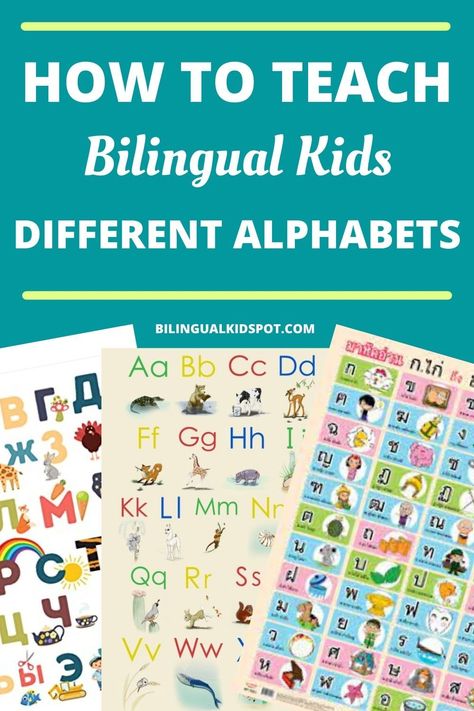
Situation 1. Parents speak different languages
It doesn't matter what language the parents speak to each other. The main thing is that everyone speaks with the child in their own language, in no case switching to “alien” - neither at home, nor at a party, nor at the reception in the clinic. If the mother speaks Russian to the child and the father speaks English (or vice versa), the child will learn to speak both languages in parallel. Growing up in such an environment, already 3-year-old bilingual children can not only speak two languages, but are also able not to translate verbatim, but to interpret: that is, they not only understand, but can also retell the essence of the conversation in their own words.
Demo lesson for free and without registration!
Take a lesson, find out about the school and get a promo code for English classes
Situation 2. They speak one language at home, but another on the street
All families who decided to move to live abroad faced this problem.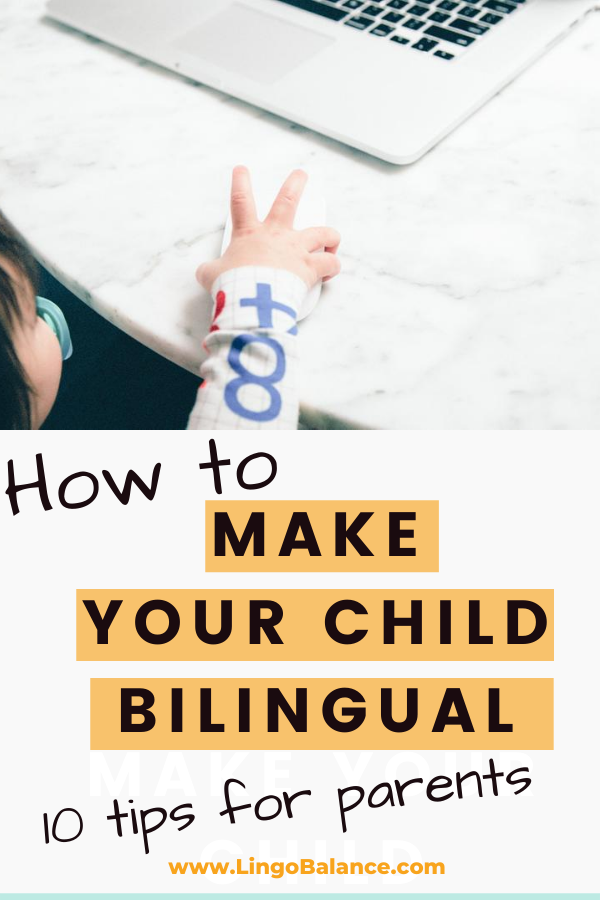 And many experienced some pressure. “Speak the local language with your child at home. He doesn't understand us! - advise kindergarten teachers, teachers at school and even neighbors. But don't worry about this. In less than a year, the baby will speak no worse than his peers. But this process will be less painful if you prepare for the move in advance, especially if your child is already in school. Teaching will be conducted in English, but what happens if you ask a child who barely knows this language to read a paragraph from an English-language physics textbook?
And many experienced some pressure. “Speak the local language with your child at home. He doesn't understand us! - advise kindergarten teachers, teachers at school and even neighbors. But don't worry about this. In less than a year, the baby will speak no worse than his peers. But this process will be less painful if you prepare for the move in advance, especially if your child is already in school. Teaching will be conducted in English, but what happens if you ask a child who barely knows this language to read a paragraph from an English-language physics textbook?
It is not difficult to spend a year on learning a language at home. If for some reason it was not possible to complete the course at home, you can catch up with the locomotive by enrolling in online English courses. Reasoning in the spirit of “Why does he need a tutor, he still speaks English with classmates all day long” can lead to the fact that the child will no longer keep up with the school curriculum, and this is not just extra stress - it is a risk to his future. In some European countries there are special classes where children additionally study the language, but this opportunity is not provided in all schools.
In some European countries there are special classes where children additionally study the language, but this opportunity is not provided in all schools.
Situation 3. Both at home and on the street everyone speaks Russian
It's good if one of the parents is fluent in English. Then you can start right from birth: one speaks to the child only in English, the second - only in his native language. This technique can be used if someone close speaks English at the native level.
But since such a situation is rare in our families, we will have to get out somehow differently. For example, hire an English-speaking nanny or governess. From about 3 years old, you can start targeted English classes with a teacher. It may seem that 3 years is still too early. In fact, this is the best moment: the child will perceive a foreign language in the same way as his native language, he will immediately learn to think in it, and not translate words from Russian into English.
Often, bilingual children begin to speak a little later than their peers. You shouldn't be afraid of this. Speech “comes” to them suddenly, and in both languages at once. Children almost never confuse languages, but they can replace words from one language with another if they do not find an equivalent. Parents in this situation should correct, explain and help the child find the right analogue.
English courses for the little ones according to a special methodology. Introduce your child to Skyeng.
Check if you know the top 100 English words
How to raise a bilingual? Practical Tips + Resources
In this article, you'll find answers to the most common questions, as well as practical tips for raising a bilingual.
– Can I teach a child a foreign language if I don't know it very well myself? YES
– Can I teach a child two languages alone? YES
Many parents around the world (myself included) practice this.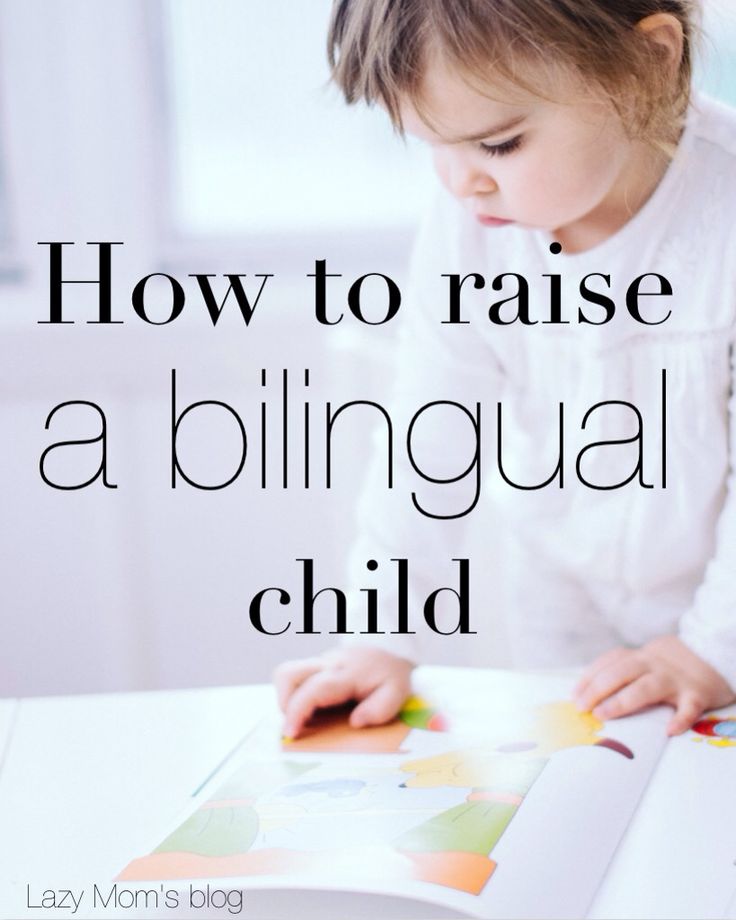 We live in Georgia, so our baby hears Georgian speech from dad, and Russian and English from me.
We live in Georgia, so our baby hears Georgian speech from dad, and Russian and English from me.
– Is it true that all bilingual children start speaking later than their peers? NO, it depends only on developmental characteristics
– Do I need to wait until the child speaks one language well? NO
– When should I start learning a language? AS EARLY AS POSSIBLE, IDEALLY FROM BIRTH, but it's never too late to start.
Whether you have immigrated to another country or decided to raise a bilingual child in your home country, what matters most is your motivation. The parent should be prepared for the fact that the child will not learn the language from the air, watching Peppa pig and other cartoons. You are faced with a difficult task - to open a different world to your baby, so forget the excuses “we live in a language environment” or “I am a native speaker”, and get ready to work daily and, first of all, on yourself.
Advice 1.
 Dashing trouble - the beginning
Dashing trouble - the beginning If your baby is not yet a year old or even a "bubbler", start talking to him right now. The sooner you start introducing a second language, the better. In any case, you will have enough time to prepare.
If you don't know where to start, here is an approximate plan for a child under :
0-3 months: crow” – English Finger Family Song
3-6 months: Name objects, family members, your actions "Let's go", etc.
6-9 months: Add descriptions of pictures - It is a cat. How does it say? It says “Meow” What color is the cat? The cat is black. Etc. Description of what is happening.
We learn by heart in advance (and don't turn on youtube) and recite poems about the weather, animals, etc. The same goes for songs and lullabies. Although Youtube is also useful - songs or cartoons in the background will never be superfluous, and in many books on raising bilinguals they are even recommended.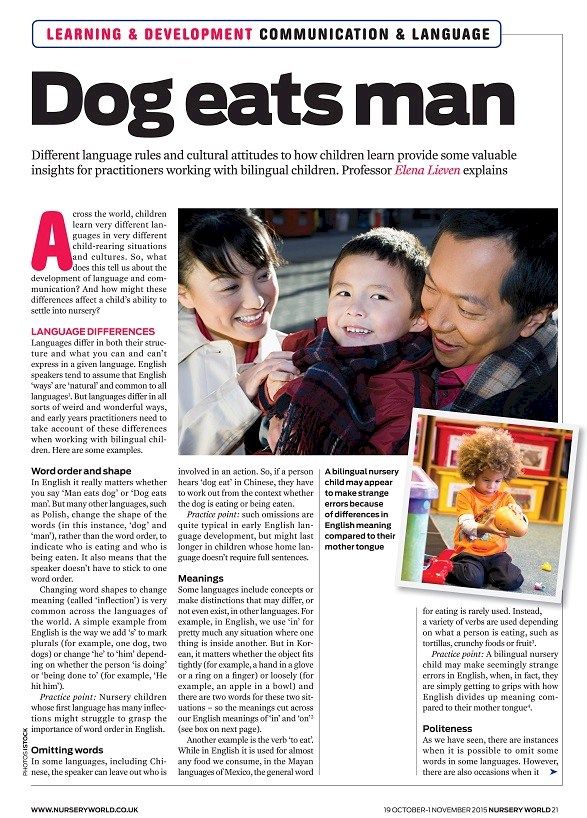
9-12 months : Keep up the good work.
By this time, any mother, even with a minimal knowledge of the language, can learn about ten rhymes and several songs.
Nina Pronicheva's book "English from the cradle" will be a great help
Tip 2. Bird Talker
You will have to switch to the "radio" mode for several years. Of course, it's hard, but the result will be the best reward.
Do not leave your baby in front of the screen, devoting the evening to borscht or social networks. Watch the cartoon with him, ask what you liked, what you didn't like, and why. Do it regularly.
Describe all your actions, all surrounding objects. Do not simplify the speech, do not lisp. The child's brain is quite capable of processing complex sentences.
There are many different materials for the development of the child in the free access online. Do not grab everything at once: choose 3-5 age-appropriate games to start with and periodically work with your baby.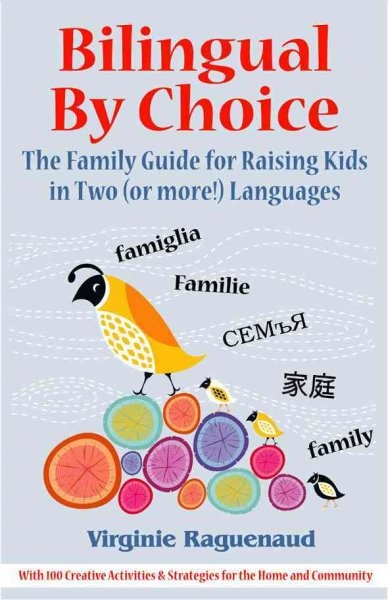
Monologues are also very important. In Chirsheva's book, it is noted that the vocabulary of a bilingual boy (Russian-English), who did not hear the parent's English monologue, noticeably lagged behind others. For myself, I solved this problem like this - I read fairy tales in English, and then I retell them to my daughter.
Tip 3. Everything is going according to plan
Decide how you will organize your language learning. It may be a well-known method - one parent - one language. It can be one language at home, one - outside. It can be one language in the sutra, one in the evening. Whichever option you choose, it should be used regularly.
Let's say you don't know the language you want to teach your child that well. Prepare in advance, write down phrases and words. There are a lot of similar lists on the Internet, ranging from going to the zoo to modeling from plasticine.
Even if the language you want to teach your child is your mother tongue, you still need to streamline its learning. The authors of the book Heinz N., Steiner C "Foreign as Native" give excellent advice - make a plan and follow it.
The authors of the book Heinz N., Steiner C "Foreign as Native" give excellent advice - make a plan and follow it.
The plan may change depending on the season, holidays, vacations, your employment. You can also enter films and cartoons that you would like to show your child, books to read, etc. in it.
In addition, the plan will help you prepare. Let's say you have planned to watch Cinderella in English. Do you remember offhand such words as “carriage”, “millet”, “glass shoe”?
Tip 4. Dinosaurs and Pirates
No matter how much you talk to your child, just talking is not enough.
Stock up on books and educational aids. The more there are, the better. Sometimes it is pleasant for an adult to plunge into childhood and look at a book that describes the types of dinosaurs or the device of a pirate ship, recall favorite fairy tales. So enjoy your joint useful pastime.
First books for your baby:
- Visual dictionaries
- Nursery Rhymes
- Bedtime Rhymes
- Noisy books and the child can feel different textures).
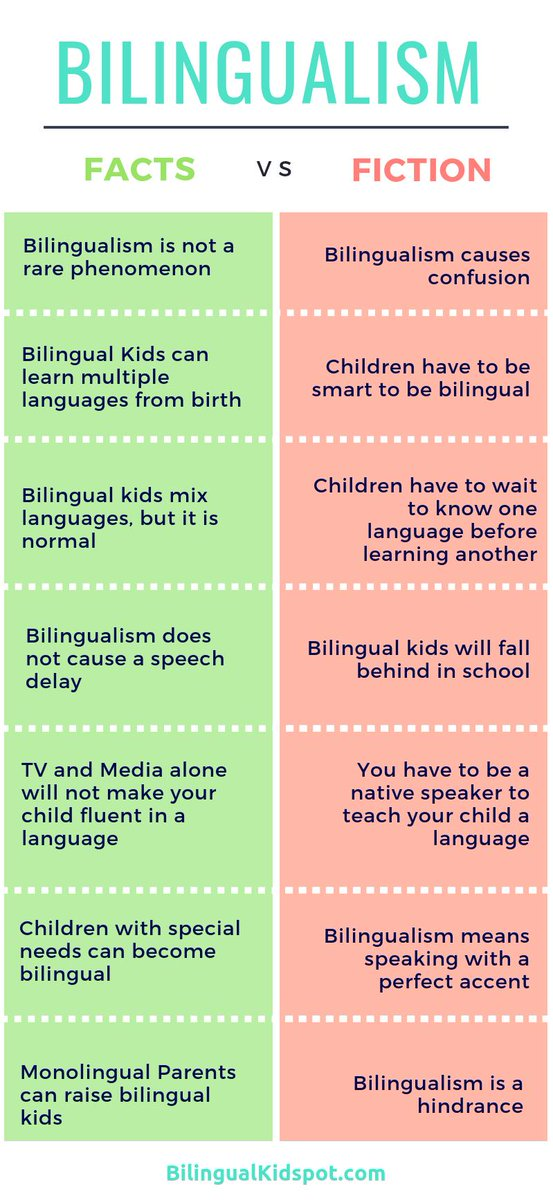
Tip 5. And again about motivation
At some point, the child begins to highlight one language and ignore the other. To prevent this from happening, motivate him in every possible way, support any desire to talk.
Use the child's interests to motivate him to use language.
If you live in another country and want to keep your Russian, be sure to connect Skype conversations with your grandmother and other relatives. Find people who speak Russian (our compatriots can be found in any corner of the world), the child will see that the language is not only "mother's (dad's) secret language."
The upbringing of bilingual children is also gaining momentum in the post-Soviet space, so look for like-minded people. It will be very useful for your child to communicate with the same children, and you will exchange experiences with parents. Yes, and native speakers have long ceased to be outlandish monsters in the Russian outback.
Tip 6.
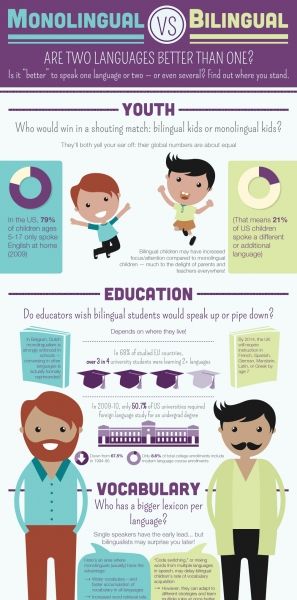 The deaf frog
The deaf frog I really like the story of the frog that crawled to the top of the mountain, ignoring the fact that the animals mocked it and advised it to come down. As a result, it turned out that the frog was deaf. So parents who decide to raise a bilingual child need to become “deaf frogs” for a while and let the valuable advice of others pass by.
I agree that raising a bilingual is a very difficult task that requires constant attention. This is not a task that can be solved in a day and forgotten. This is not a hundred meters, this is a marathon. On some days, laziness will overcome (I'm tired at work, I'll sit better on the Internet), the desire to quit everything (Why do we need this?). As soon as such a thought creeps into your head, immediately drive it away with a filthy broom! If you put in the effort, the result will be the best reward!
And finally, a small selection of resources
Books
- N.
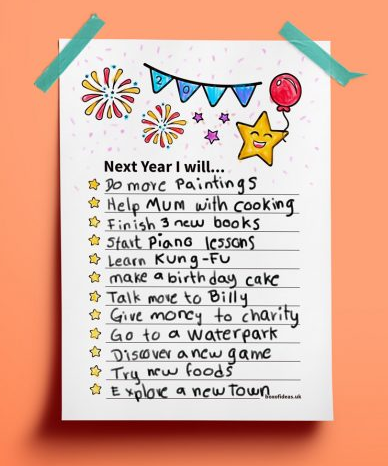 Pronicheva “English from the Love”
Pronicheva “English from the Love” - E. Madden “Our three -language children”
- E. Protasov “How to raise a child to bunk binary”
- . Chirshev "Children's bilingualism. Simultaneous acquisition of two languages”
- N. Steiner “Foreign as native”
- O. Bazhenova “Peculiarities of bilingual education”
Online
A wonderful channel with children's songs and poems. A big plus is that there are subtitles, you can also sing karaoke
- https://www.youtube.com/channel/UCs7on9W7SIbyO4f-Pb7lgbg
Mothers about raising bilingual children in a Russian-speaking environment
- https://www.youtube. com/channel/UCtGAFXUdJZ12et9_D82bnew
- https://www.youtube.com/channel/UCDwit5LzqTaHW8f851-VPhA
- https://vk.com/englishare
A few more resources
- https://www.youtube.com/user/SuperSimpleSongs
- https://www.youtube.com/user/MotherGooseClub
Notorious Helen Doron
- https://www.

Learn more
